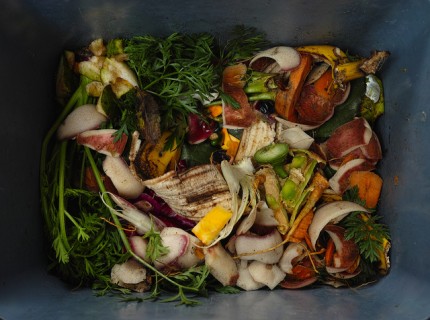Love Your Food: 7 Steps to Reducing Household Food Waste
Posted: August 16, 2016
Categories: GoodFoodBites / News from Sustain Ontario
Food waste is costing Canadians $31 Billion each year. We discard at each level of the food system, but it is consumers who are responsible for draining 47% of this value.
Why do we waste so much food? A number of reasons come into play. With food being offered in larger quantities at a more affordable price (think bulk stores or huge restaurant servings), we often purchase more than we can consume and forget leftovers in the back of the fridge. Studies in the UK have shown that food waste is due to the complexities of everyday life. Rushed schedules mean that families and individuals do not plan their meals, over-purchase food they already have at home or end up eating out instead of eating leftovers. So how can we reduce our food waste footprint without completely changing our eating habits?

1. Plan your meals. Take a look at what you have in your fridge before you head to the store. Write down a few meal ideas and buy accordingly. Remember to take into account the nights when you plan to eat out.
2. At the store, buy only what you need, especially when buying products with a short shelf life. Bulk sales mean you save money, but only if you actually eat all of the extra food you bought.
3. Accept and encourage less than perfect produce. Producers are only able to sell fruits and vegetables that look close to perfect. Superficial scars and less that symmetrical shapes will not be accepted by retail and are not favoured by consumers. Ask your local politicians or retail stores about where you can find delicious but imperfect food.
4. Buy local and get to know your farmers. Feeling closer to the source of your food and the hard work of producers adds value to your meals.
5. In the kitchen, prepare and serve only what you can eat. Take advantage of ingredients that are often discarded in the kitchen, like chicken bones (stock) and broccoli stems. Extra food can be served as leftovers the next day, but make sure to eat perishable leftovers first and keep them at the front of the fridge for easy access the next day.
6. Sit down to eat and eat with others. Take some quality time to enjoy what you have prepared. Eat with family or have some friends over.
7. Don’t throw food in the garbage. First make sure that items are inedible. “Best before” dates are an indication of freshness, not of food safety. Be cautious of foods that are likely to spoil quickly, but do not mistake “best before” for an expiration date! Finally, if your food is inedible, place it in your green bin or compost bin. When organic waste goes to landfill, it produces methane gas, which is has a greenhouse gas effect 25% stronger than CO2.
Interested in learning more? Check out these resources:
- Sustain Ontario’s recently launched Household Food Waste: A Municipal Regional Guide
- York Region’s Good Food Program resources for meal planning and eating.
- Expert tips for reducing food waste in the kitchen.
- $27 Billion Revisited: The Cost of Canada’s Annual Food Waste
Image courtesy of: szczel via flickr.
